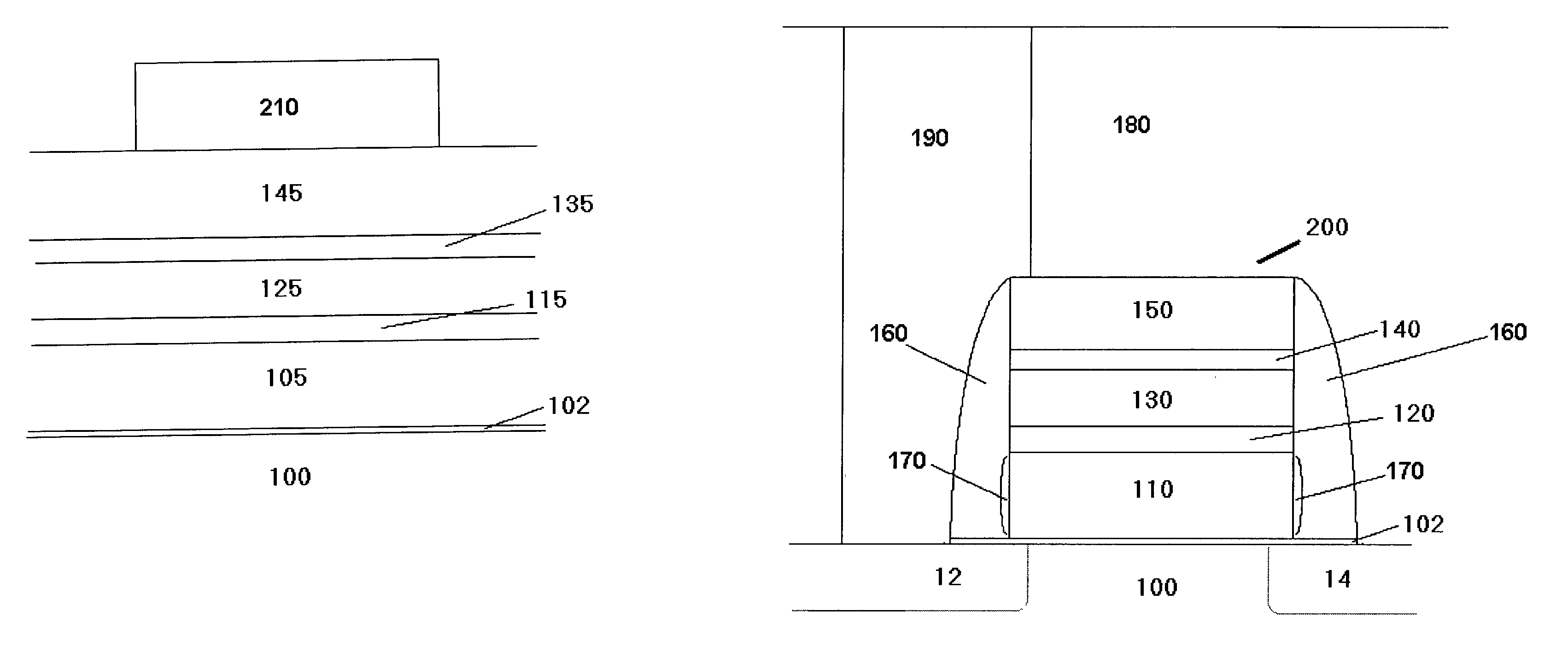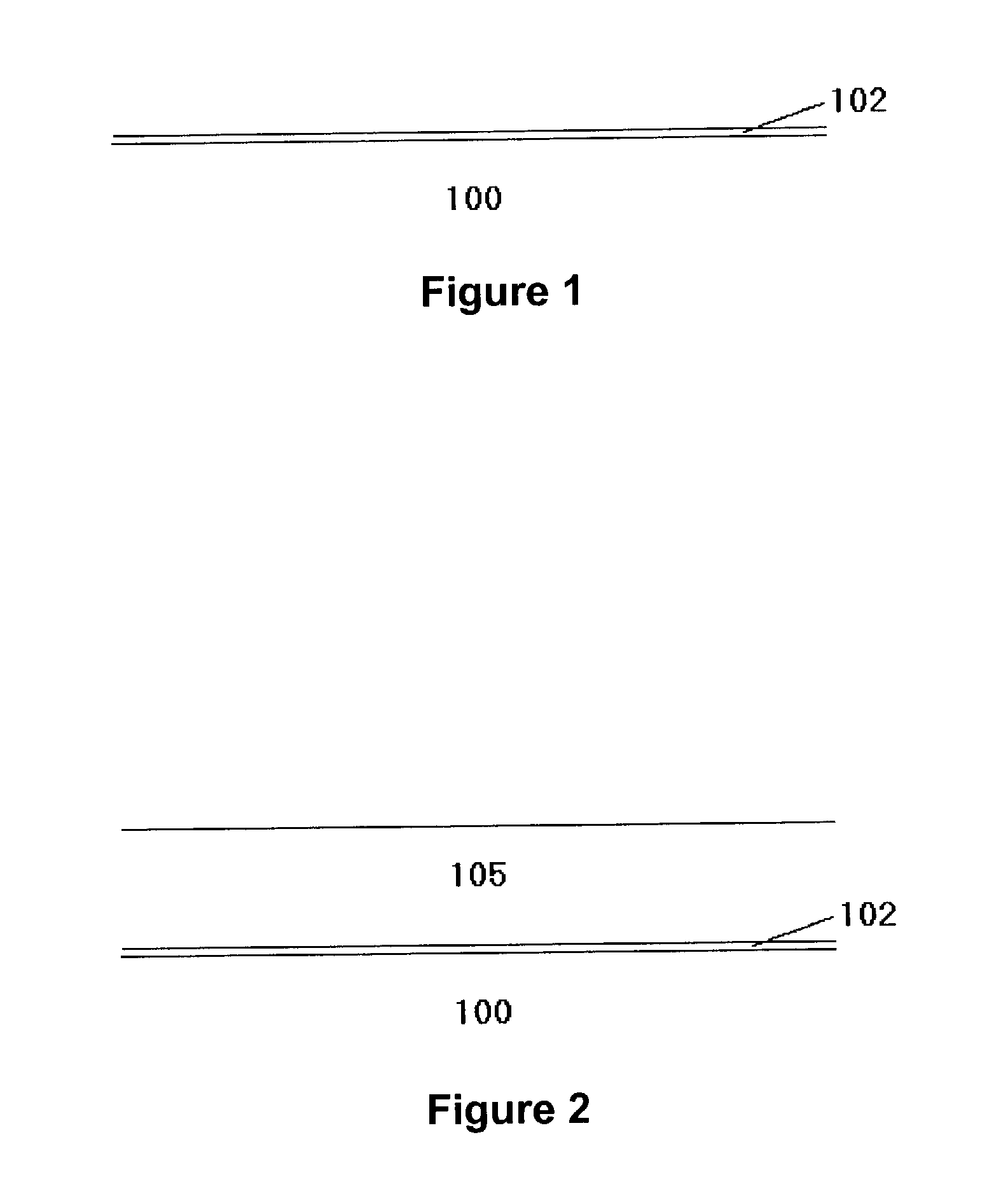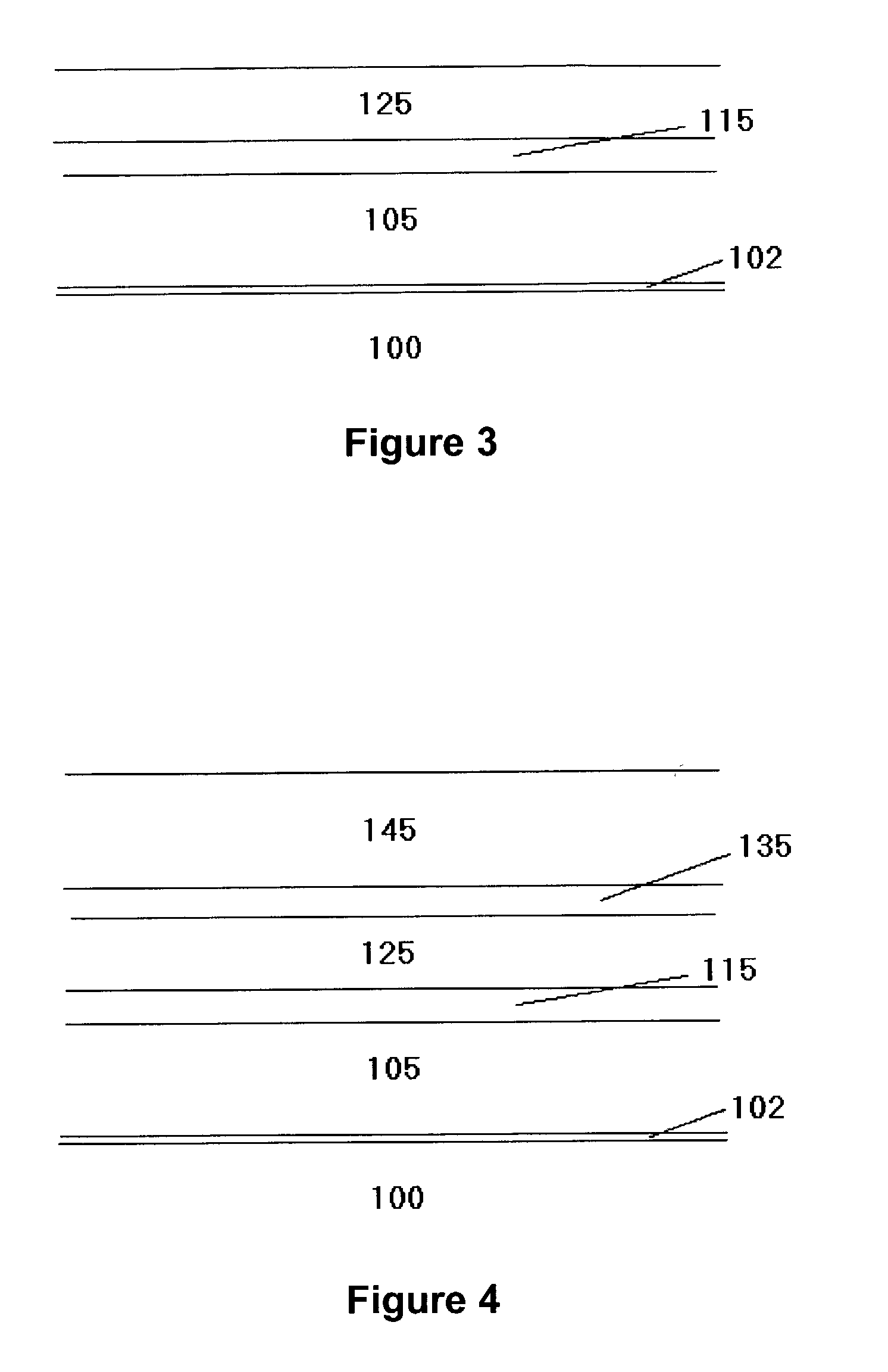Deuterium incorporated nitride
a nitride and deuterium technology, applied in the field of deuterium incorporated nitride, can solve the problems of reduced channel conductance, transistor performance degradation, and non-ideal capacitance-voltage characteristics
- Summary
- Abstract
- Description
- Claims
- Application Information
AI Technical Summary
Benefits of technology
Problems solved by technology
Method used
Image
Examples
example
Example 1
Formation of a Gate Structure
[0042]The following detailed steps would be used to form the gate stack having a split gate:
[0043]
Nitrogen-containing gate oxide formationPoly deposition - single amorphous gate depositMask for P-dopingP+ poly implantationN-well implantationP-channel implantationP+ poly implantation strip resistMask for N-dopingP-well implantationN+ poly implantationN-channel implantationN+ poly implantation strip resistTungsten gate pre-cleanTungsten PVD, sputtering (nitrogen + argon, thenargon only)Nitride - ND3 and BTBASDeposit ARC and ResistEtch mask for nitrideNitride etch - ARC, silicon nitride, and partialtungsten etchRemove resistTungsten and Poly etchPost-poly etch cleanSelective oxidationN+ source / drain extension implantStripping & cleaningP+ source / drain extension implantStripping & cleaningNitride spacer deposition (BTBAS chemistry)Spacer etchPost-spacer etch cleanN+ source / drain implantStripping & cleaningP+ source / drain implantStripping & cleaningN...
PUM
 Login to view more
Login to view more Abstract
Description
Claims
Application Information
 Login to view more
Login to view more - R&D Engineer
- R&D Manager
- IP Professional
- Industry Leading Data Capabilities
- Powerful AI technology
- Patent DNA Extraction
Browse by: Latest US Patents, China's latest patents, Technical Efficacy Thesaurus, Application Domain, Technology Topic.
© 2024 PatSnap. All rights reserved.Legal|Privacy policy|Modern Slavery Act Transparency Statement|Sitemap



